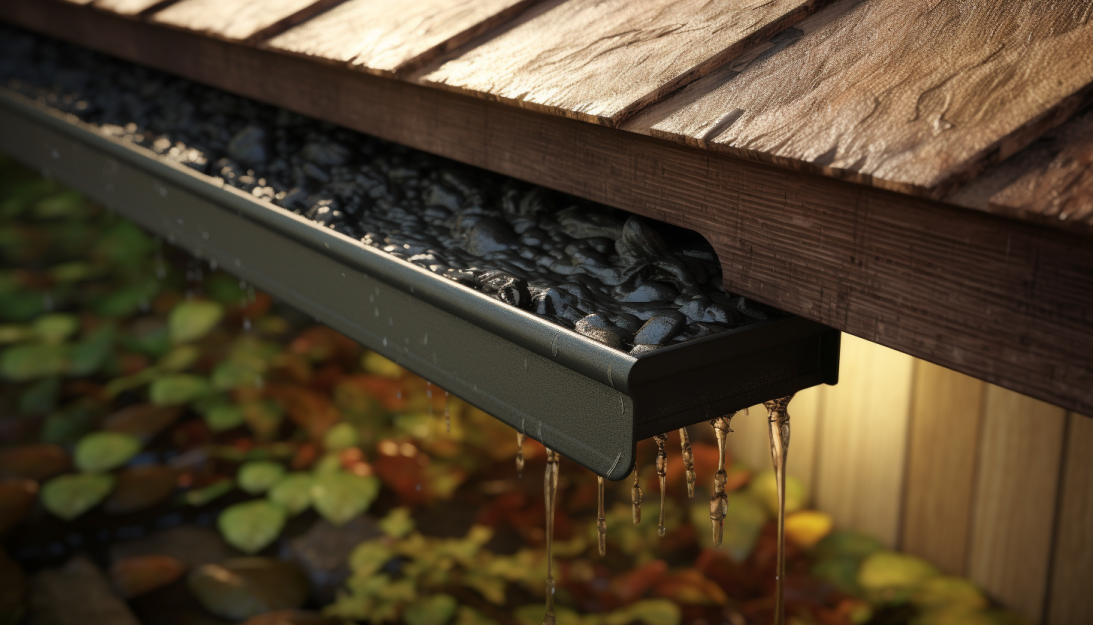Do you have the house with the gutter around? You have seen the gutter beneath the roofs before, Do you know why the people install the gutter in their house?
- Water Management: Gutters collect rainwater from the roof and direct it away from the foundation of the house. This prevents water from accumulating around the foundation, which can cause erosion, flooding, and structural damage over time.
- Preventing Erosion: Gutters prevent soil erosion around the house by channeling water away from the base of the structure. This helps maintain the stability of the ground around the foundation.
- Foundation Protection: Excess water near the foundation can seep into the ground and potentially weaken the foundation of the house. Gutters help protect the foundation by diverting water away, reducing the risk of structural issues.
- Preventing Basement Flooding: Properly functioning gutters can prevent water from pooling around the basement or crawl space, reducing the risk of flooding and water damage.
- Preventing Water Stains and Damage: Gutters keep water from dripping off the roof and causing stains on exterior walls. They also protect the paint and siding from water-related damage.
- Landscaping Preservation: Gutters prevent excess water from pouring down in one concentrated area, which can damage landscaping, gardens, and lawns.
- Preventing Mold and Mildew: By directing water away from the house, gutters reduce moisture levels near the walls and roof, helping to prevent the growth of mold and mildew.

Now, let’s take a look next. Keeping gutters clean and well-maintained is crucial to ensure they function properly. Here’s a step-by-step guide on how to clean and manage gutters effectively:
- Safety Precautions: a. Wear safety gear, including gloves, safety goggles, and a sturdy ladder. b. Ensure the ladder is stable and placed on a flat surface. c. Avoid working during bad weather or when the roof and gutters are wet.
- Gather Necessary Tools and Materials: a. Ladder b. Bucket or bag to collect debris c. Garden trowel or gutter scoop d. Hose with a spray nozzle e. Safety goggles and gloves
- Inspect and Clear Debris: a. Start at the downspout and work towards the corners of the gutter. b. Use a trowel or gutter scoop to remove leaves, twigs, and other debris from the gutters. c. Place the debris in the bucket or bag, making sure not to let it fall on the ground or into the downspout.
- Flush Gutters and Downspouts: a. Use a hose with a spray nozzle to flush out remaining debris and check for proper water flow. b. Direct the hose into the gutters and downspouts to remove any remaining dirt or clogs.
- Check for Clogs and Blockages: a. Inspect the downspouts for any blockages and clear them if necessary using a plumber’s snake or a high-pressure nozzle on the hose. b. Ensure water flows freely through the downspouts.
- Inspect Gutter Alignment and Damage: a. Check for loose or sagging gutters and reattach them if needed. b. Look for signs of damage, corrosion, or leaks. Repair or replace damaged sections promptly.
- Trim Overhanging Branches: a. Trim branches or foliage that hang over or near the gutters to prevent them from dropping leaves and debris.
- Regular Maintenance Schedule: a. Establish a regular cleaning schedule, typically twice a year—ideally in the spring and fall. b. Adjust the frequency based on your location and the amount of debris your gutters accumulate.
- Consider Gutter Guards or Screens: a. Install gutter guards or screens to reduce the amount of debris that enters the gutters, making maintenance easier.
It would be nice if you make the gutter by yourself. Go here.
